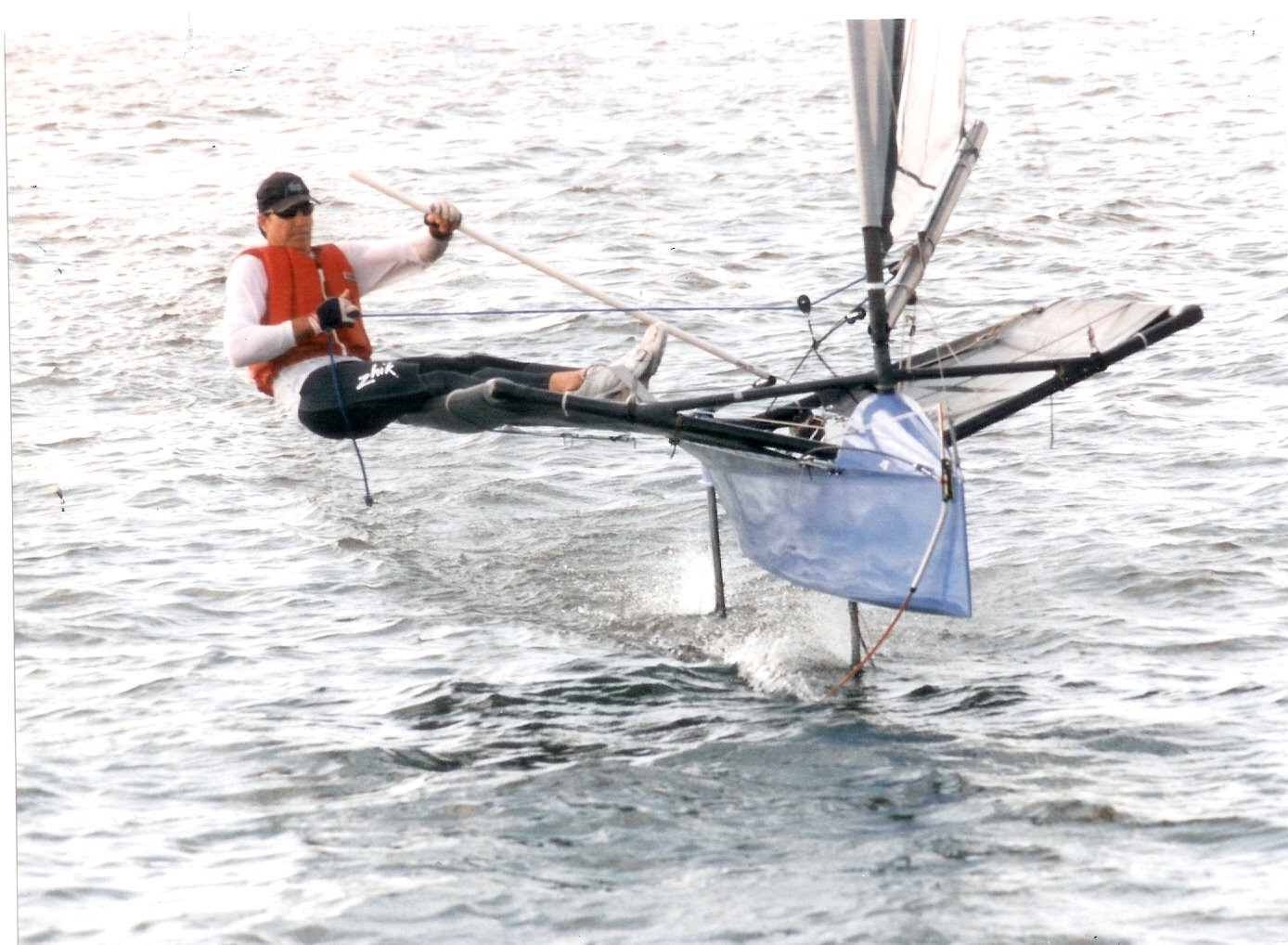

Aftermath is out of the kitchen and on the trailer only to be replaced with Try-Umph, the mistral I built in 1997. This has been a good boat, winning a couple of nationals and prompting many of the top helms to build mistrals, now the defacto pacesetter design in the fleet. Try-Umph was slightly overbuilt (the classic moths have a 75 pound minimum hull weight and Try-Umph's certificate says 84 pounds.) I've been meaning to pull some weight out by removing some of the deck structure, and now I have the chance. Fortunately, school has been cancelled for tomorrow, so while Susan's off to work the kitchen becomes my shop. Below is a picture taken a few years back sailing off ODU in Norfolk.

I've also included another shot of the gantry modification for Susan's boat showing more clearly its triangulation. Thanks to all who gave input. I think it should be strong enough, but only by trying it will I know.































